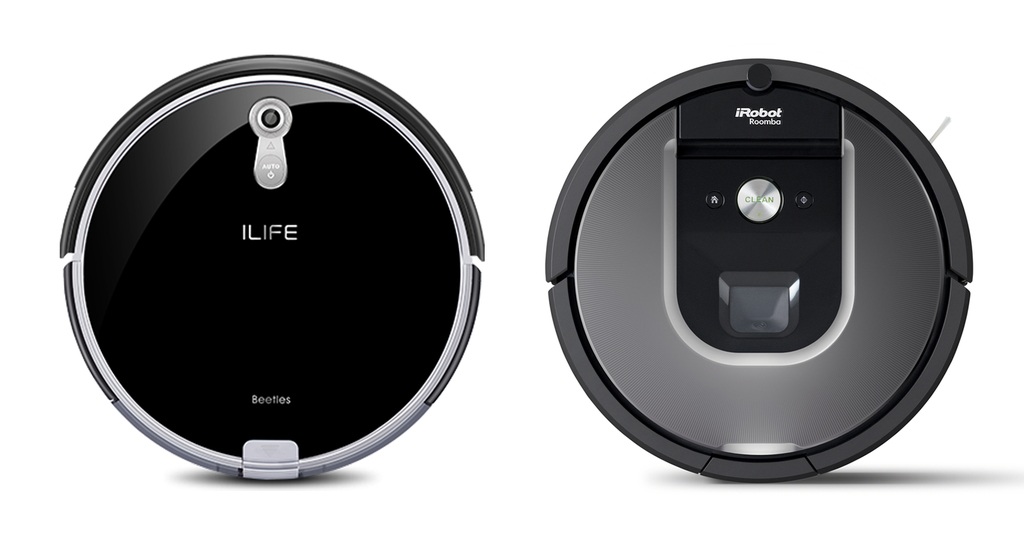Robotics and home automation are quickly becoming the new normal. Almost gone are the days when you had to clean your entire home top to bottom all by yourself. Now, you can enlist a virtual army of robots to help you clean and maintain your home.
Robotic vacuums are not new, but they are taking the world by storm and companies are quick to jump on the bandwagon. This article is designed to compare two such companies: iRobot and ILIFE. Both of these companies supply robotic cleaners to the world and have taken innovations in home cleaning to higher levels.
With brand loyalty still a major marketplace driver, I will attempt to compare the two based on research, innovations, popularity and robot capabilities. If you want to get to know the companies and what they offer, continue reading the entire article below. However, if you trust my opinion, (and why shouldn’t you?) my recommendation is to pick up a Roomba over an ILIFE vacuum.
Contents
iRobot – A Company Profile
In many eyes, the American based company iRobot is the innovator of robotic vacuums. However, this is not the case. In fact, the first credited robotic vacuum goes to Electrolux, who unveiled the Trilobite in 1996. It had a lot of issues and didn’t go over too well. Electrolux discontinued production shortly after.
In 2001, Dyson produced a robotic vacuum, but the expense was so high they never released it to market. A year later, in 2002, the Roomba from iRobot was released and fully accepted by the general public.
In the time since then, iRobot became a household name and continued to develop the Roomba and other automation cleaning products further. They have also introduced the Braava series of mopping robots and the Mirra pool cleaning robot.
Products and Innovations
iRobot has been at the forefront of home robotics since their inception in 1990 at MIT. In 20 years they have produced and released over 40 different robot cleaners, most of which are in the robotic vacuum line. The Roomba has become synonymous with home automation, and for good reason.
[easyazon_image align=”center” height=”500″ identifier=”B013E9L4ZS” locale=”US” src=”https://smartrobotichome.com/wp-content/uploads/2018/04/410kk6hqOyL.jpg” tag=”srh-easyazon-20″ width=”500″]While other companies have designed their robots to model the Roomba, iRobot has stayed true to course and made improvements on their own designs. They have added visual sensors and cameras to aid in area mapping and navigation, improved the three-stage cleaning system that is now the industry norm, and they have made use of voice controls and mobile apps to control their cleaners.
The current top of the line model is the Roomba 980, which has anti-tangle extractors, virtual wall barriers, top mount cameras and sensors to prevent cord tangles, find debris, prevent damage by knocking into objects and improvements on every aspect of their initial design.
ILIFE – A Deeper Look
ILIFE, a Chinese startup, formed in 2010 with the purpose of creating a state of the art robotic vacuum to compete in the current market. Their first model, the X500, showed a lot of promise and had new features not yet seen in home cleaning automation.
[easyazon_image align=”center” height=”500″ identifier=”B01NBVY14Q” locale=”US” src=”https://smartrobotichome.com/wp-content/uploads/2018/04/41h8LX4L5BL.jpg” tag=”srh-easyazon-20″ width=”500″]The company has released several models of robotic vacuums and robotic mops. The current model is the ILIFE A6 and features many attributes that the other vacuums offer. ILIFE’s main purpose was to produce an affordable robotic vacuum that does a great job of cleaning.
Products and Innovations
ILIFE boasts infrared eye detection system, which seeks out and finds dirt and debris instead of relying on sensors underneath the robot. ILIFE also has mopping robots such as the A5s, which vacuums and mops in a single unit.
[easyazon_image align=”center” height=”500″ identifier=”B01BAYXDXA” locale=”US” src=”https://smartrobotichome.com/wp-content/uploads/2018/04/514QX2Nlq6L.jpg” tag=”srh-easyazon-20″ width=”500″]ILIFE also only uses lithium-ion batteries that have a longer run time than most others on the market. The company is constantly working on newer versions and upgrades to current models to stay on par with the more popular names.
One of their more popular innovations is a three-in-one robot that will sweep, vacuum and mop without having to buy or use separate machines.
ILIFE and iRobot Similarities
[easyazon_image align=”none” height=”500″ identifier=”B06XRT2B3P” locale=”US” src=”https://smartrobotichome.com/wp-content/uploads/2018/04/51ylkFbMJiL.jpg” tag=”srh-easyazon-20″ width=”500″]
[easyazon_image align=”none” height=”500″ identifier=”B01NBVY14Q” locale=”US” src=”https://smartrobotichome.com/wp-content/uploads/2018/05/51Y4jGoDpXL.jpg” tag=”srh-easyazon-20″ width=”500″]
I have heard the saying that imitation is the greatest form of flattery. In that sense, iRobot must surely be flattered. Have a look at what the two brands have in common:
- Each robot vacuum uses three-stage cleaning methods.
- Both offer remote control operation.
- You can schedule and manually clean with each model.
- The two companies offer wireless barriers to aid in area control.
- Both companies have robots that will clean any floor type.
- Both manufacturers offer robots that vacuum and robots that mop.
- Each offers low-profile design for getting to hard to reach areas.
- Both have sensors that detect dirt and ensure the floors are clean.
- Smart robotics allow each model to return to their docks for recharging.
- Robot vacuums from both companies are designed to transition smoothly from one floor type to another.
Differences Are in the Details
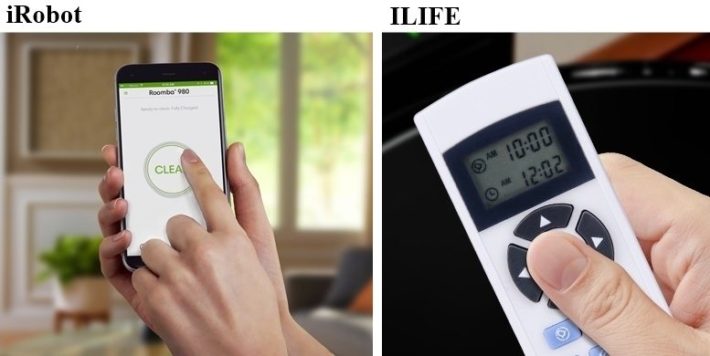
- IRobot integrates with smart home technologies and mobile apps where ILIFE has a standard hand-held remote control.
- ILIFE has integrated mopping and vacuuming into a single robot while iRobot uses separate machines for each job.
- ILIFE uses an infrared light sensor to detect edges and ledges before the vacuum reaches that area. iRobot uses acoustic and visual sensors, to avoid collisions.
- IRobot offers a cleaning report in high end units while ILIFE does not.
What I Love About ILIFE
I will tell you one thing, the age of robotics is upon us, and I for one, couldn’t be happier. ILIFE is an up and coming company in the home automation market, and I can only see good things in their future.
One of the greatest things about ILIFE is they were one of the first robot vacuum manufacturers to use rechargeable lithium-ion battery packs for their machines. Most other companies used Nickle Metal Hydride (NiMH) batteries, which have higher self-discharge rates and longer recharging times. ILIFE used lithium-ion and changed the game, near doubling the run time on a single charge.
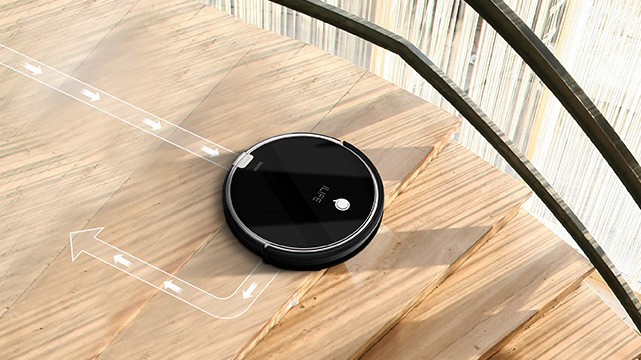
I also really like the sensors using infrared technology to scan for edges and drop offs. In fact, I found myself dimming lights and following the machine around to see if I could see lights or lasers (I couldn’t) coming from the unit.
One of the largest innovations though is the ability to have one machine clean and mop. I really like the idea of only having to purchase one machine to clean and mop my hardwood floors. Of course, you have to manually swap the water trays and mop head for the dustbin, but it is a simple process.
What I Dislike About ILIFE
No home automation cleaner is going to get everything just right. What works for one home set up might not work for another. ILIFE tries hard to combine every solution into their models and sometimes this can backfire.
The infrared sensors work great. However, the acoustic sensors are a little sub-par. Owners report that their machine fell off the stairs a few times because the sensors didn’t pick up the drop. In another instance, dark stripes or spots on the edge of their carpets prevented the robot from leaving the area.
As I also fully understand the risks, I know why you have to remove the water tray before you can charge the machine, and can’t charge it in mopping mode.
In mopping mode, you have to constantly stand guard. You can’t just leave the house and let the robot do its thing. It would be a lot easier to be able to set the machine up to mop mode and let it run while I am gone.
I also dislike the remote control. It has buttons that are akin to a stereo with play and pause buttons. I would rather use my cell phone and an app like I can with other models, but ILIFE has yet to introduce this technology. I found the remote a bit awkward to use and while it should be intuitive, I was often left reading the manual over and over.
Spot cleaning is done by remote control only, and it doesn’t do as good of a job as I thought it should.
The only other problem I had with ILIFE is that they are solely based in China. They do have a US-based support line you can call toll-free, but if you need parts, replacements or anything technical it has to come from China, which can take a couple of months.
What I Love About iRobot
What can I say? iRobot has basically cornered the market. With their Roomba line, your home automation is simple and basically worry free. iRobot has a lot of features that set them apart. When you are the leader, you have to constantly make improvements to stay in the lead; iRobot is doing that.
[easyazon_image align=”center” height=”376″ identifier=”B013E9L4ZS” locale=”US” src=”https://smartrobotichome.com/wp-content/uploads/2018/04/41HlG8lnq1L.jpg” tag=”srh-easyazon-20″ width=”500″]I really like the virtual wall barriers. They aren’t the only company that uses them, ILIFE has barriers as well. However, iRobot has improved the design and features and packed it into a smaller package. The radius is large enough to accommodate any obstacle or item you want to be avoided or entrance way you want to block off.
Another feature I really like is the iHome app. I can take full control of my vacuum or mop from anywhere at any time. I can name my robot to be used with voice commands through third-party controls such as Amazon Alexa, Google Home, and IFTTT, and I can schedule, reschedule and check on the progress at any time.
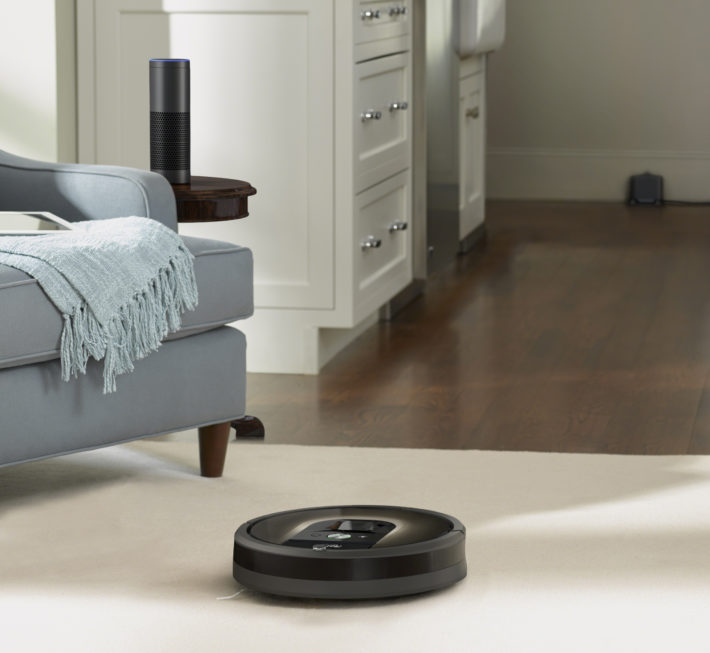
This is a huge step forward. Let’s say you have an impromptu group of guests that will show up at your house right when you get home from the office. You can just reach for your phone and set the vacuum to clean while you finish your workday. By the time you get home, the floors will be clean and ready for guests.
One small feature that plays a big role for me is the introduction of brush-less extractors. The Roomba vacuums have done away with bristles and brushes on their rotating extractors and let me tell you; maintenance is so much easier.
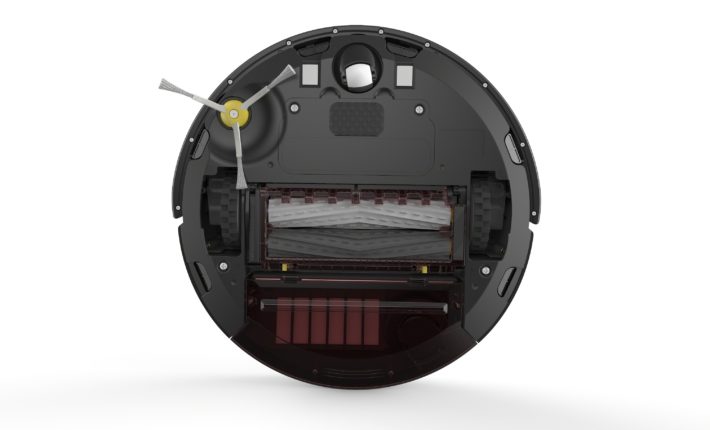
I no longer have to spend time with a knife to cut hair out of the brushes on my large vacuum. I pop out the rolling bars, pick out any stuck hair in the corners, and pop them back in. The required maintenance is very acceptable.
Since I am one of those “set it and forget it” types, maintenance and upkeep are soon forgotten in my house. iRobot has catered to my kind and made the whole process take less than 5 minutes every week.
What I Dislike About iRobot
As I mentioned earlier, nothing is perfect, and iRobot falls into that category as well. There are things I didn’t like about the Roomba line up.
One major thing was the inability to sense dark spots. Owners have reported their Roombas have trouble with area rugs with black and white patterns, since the Roomba mistakes the dark color for a cliff and won’t go over it.
Another thing I don’t like is that I need two machines to vacuum and mop my hardwood floors. Being able to have one machine do it all would be a huge bonus like ILIFE was able to do.
I also had a problem with some of the Roombas finding the docking station. My Roomba 650 sometimes has trouble finding the docking station when it wanders too far away. This means that when it’s done vacuuming or when the battery is too low, the robot will just stop in its tracks, and I would have to move it back to the docking station manually. A small gripe but it’s an area for improvement.
Which One is Right For You?
Personal experience aside, you need to choose which company offers a robot that is right for you. If you are on a strict budget or if you are just getting into home automation, the ILIFE might do a good enough job. Their robots perform well and do the job they say they are going to do.
The company has been around for over a decade now and are constantly improving their machines. Their costs remain some of the lowest on the market, and for this reason alone makes them a serious contender in robotic cleaning.
ILIFE is a company I will be keeping my eye on. I expect that within the next five years they will be giving the most popular robotic cleaners a serious run for their money.
You can see the ILIFE line and check prices on Amazon.
On the other hand, if the Roomba line is within your budget, you may be better served by sticking with the most popular brand. It is true to a certain extent that “you get what you pay for”, and iRobot’s machines have stood the test of time. They are durable, reliable, and the customer service is above-par. The higher-end models have Wi-Fi connectivity and visual mapping, allowing for whole level cleaning, allowing you to “set it and forget it”.
With their voice control, mobile app and US-based support, iRobot has a lot of promise for the future. They have been around for over 20 years, and it doesn’t seem like they are going to go away without a fight.
You can see the iRobot line and get prices here on Amazon.
The Wrap Up
It is hard for me to pick a company over another based on a model here or there. Everyone’s budget and needs are different.
For me, ILIFE comes close, and I do expect big things from them in the future. However, when compared to iRobot, they just don’t quite have it yet.
I don’t think they need to open a full product support line in America, but it wouldn’t hurt them to have more US-based availability.
Likewise, iRobot has their cons as well. I do not doubt that ILIFE will continue to be a serious contender in the budget robot vacuum space. For my money though, iRobot’s machines give a better overall user experience and thus worth every penny.
If you are starting out and just want to see what these machines can do, go with ILIFE. You will save a lot of money and be able to test out the functionality of a robotic home.
However, if you are ready to dive in and really get down to business with home automation, iRobot is the choice for you.
